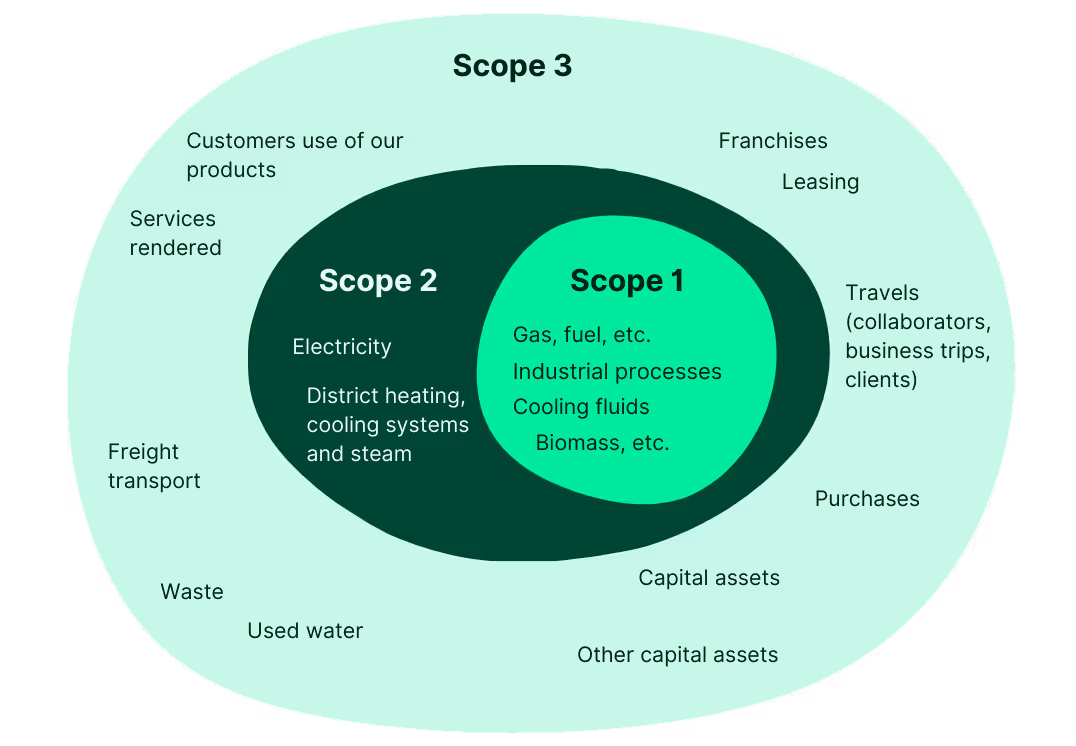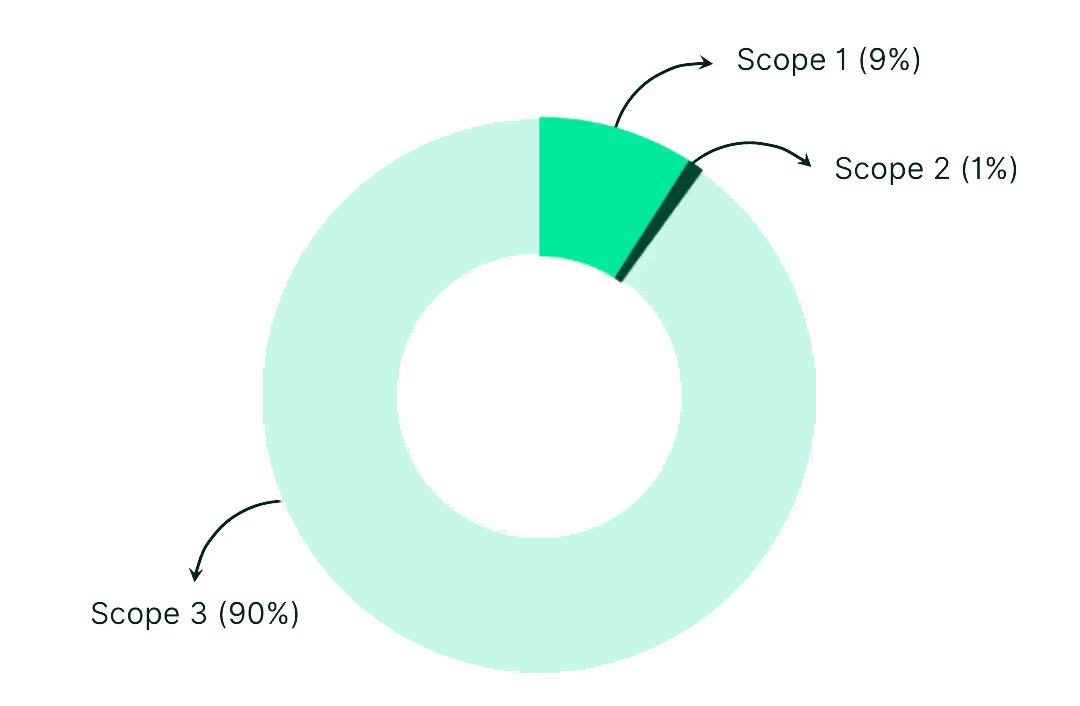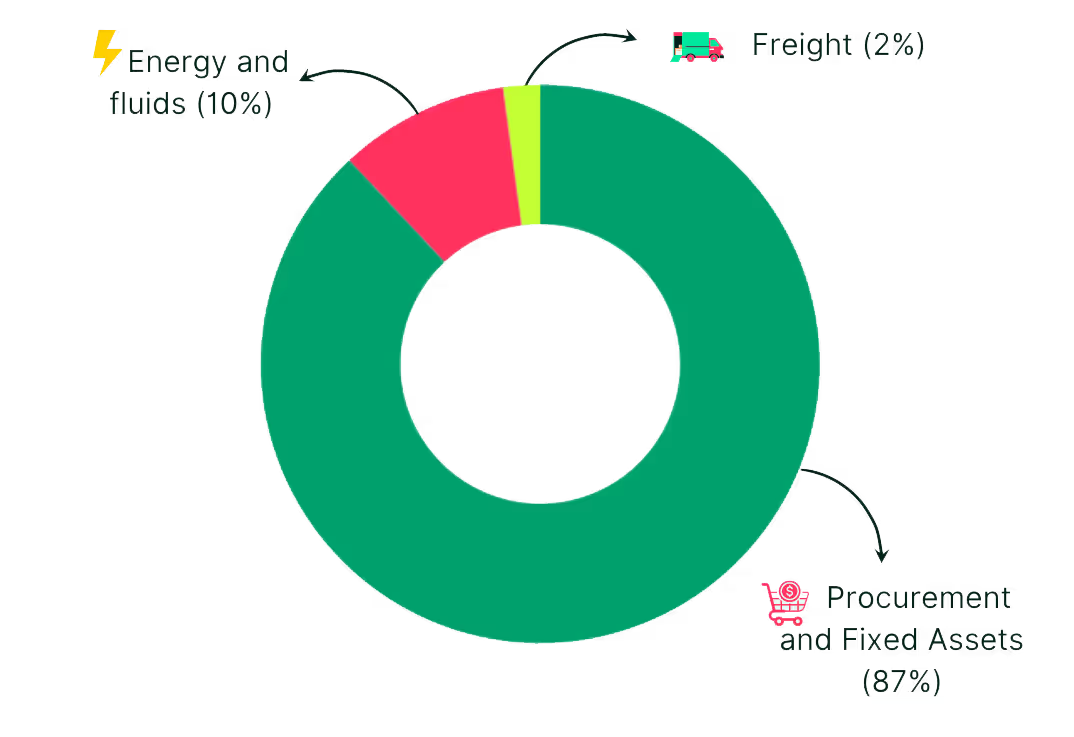In a context where regulations* and customer expectations are increasingly demanding in regards to company impact, we are also convinced that measuring and managing our emissions is a guarantee of the sustainability of our activities.
A carbon footprint assessment is the first step in understanding the structure of our emissions and creating policies to control them. It allows companies to anticipate society and market trends, take a substantial step in their strategic development and build a sustainable future for their activities and the planet.
It is for these two reasons - control of the impact and sustainability of activities - that we decided to carry out our first carbon assessment. Here is how we conducted it, the results we obtained and the conclusions we drew from it.
Adopt a demanding methodology, rely on ADEME's resources and choose experienced partners
Created by the ADEME in 2002, and now developed by the Association Bilan Carbone, the carbon footprint assessment uses the data of a company's activities to convert them into greenhouse gas emissions using emission factors and a unit: the CO2 equivalency.
In order to draw up the most relevant carbon assessment possible, it is essential to clearly define the scope of the company's emissions measurement.
The study scope
There are 3 types of factors:
- the temporal factor which determines the period observed;
- the operational factor which defines the activities taken into account;
- the organizational factor, which defines how many of the company’s entities are included in the assessment.
Temporal factor
Lixo was created in October 2019 and has dedicated most of its first year of existence to studying its market and developing its technology. The commercialisation of its solutions began in 2021. We have therefore decided to begin our temporal perimeter in 2021.
Operational factor
In order to achieve the most complete carbon footprint assessment possible, we decided to account for factors 1, 2 and 3*. This choice allowed us to take into account all of our direct and indirect emissions, throughout our value chain, in order to establish the most accurate impact estimate possible.
Organisational factor
In 2021, Lixo had only one entity, its office in Paris.

Data Collection
The data collection phase is key to establishing the most accurate impact estimate possible. It requires meticulous work and is the most complex phase in the estimation of a carbon footprint.
It requires gathering all the data available internally on the company's activities, as well as identifying all the company's stakeholders, in order to collect the missing information from them. The objective of this process is to establish a database that is as complete and accurate as possible.
As is often the case for the first carbon assessments of companies, we were not able to be as exhaustive as we would have liked.
In order to compensate for the lack of information, we based ourselves on the data made available by Ademe in order to predict the most accurate scenarios possible.
The analysis
Once our data was collected and our scenarios established, we worked with the Aktio team to calculate our impact KPIs and subsequently, to draw conclusions from them. We are grateful for Aktio’s help and support.
How can we reconcile our desire for growth with our mission to control our footprint?
90% of our emissions are indirect
The results of our first carbon assessment enabled us to estimate our total footprint at 48.2 tCO2eq emitted in 2021. But above all, this study revealed that 90% of our emissions were indirect and came exclusively from our Scope 3.


This is due to our purchases and fixed assets expenditures, which account for 87% of our emissions, fully accounted for in our scope 3. Our solutions include a hardware component which requires the purchase of many electronic components in abroad. The impact of manufacturing the hardware, purchasing the raw materials necessary, transportation, etc. is very high. This can explain why it is our main source of greenhouse gas emissions.
What are our policies for a low-carbon development path?
This result led us to implement a more sustainable purchasing policy. It includes a guide to help our employees choose the most responsible suppliers.
Although our direct emissions (scopes 1 and 2) account for only 10% of our carbon footprint, we are also working to reduce them. We have put in place several actions:
- the use of a responsible cloud service (Qarnot) that recovers 96% of the energy (heat) produced by software computation by redirecting the energy generated to heat buildings and facilities;
- the implementation of a sustainable mobility for remote employees and business trips;
- sharing a guide of good environmental practices to reduce energy consumption and limit waste production.
Our challenge to maintain a sustainable business
We are a fast-growing start-up. As our activities continue to grow, so will our emissions. Our biggest challenge resides in the control of our ecological footprint by making sure our emissions don’t increase as fast as our growth.
Therefore, we have put in place an environmental strategy which aims to reduce the amount of CO2 emitted per euro of revenue. We plan to enshrine this objective within our mission statement.
*The completion of a carbon footprint has been made mandatory - since 2012 - for all companies with more than 500 employees. Young innovative companies are also encouraged to do so maybe


